In August 2003 we acquired this property due to its potential i.e. it had a number of mature Eucalypts and Black Wattle on a sloping block towards a seasonal gully.
It had been mowed from boundary to boundary with the exception of large clumps of lantana which surrounded the mature trees. These trees were also covered in Climbing Asparagus and Cats Claw Creeper.
Over the years of mowing there were large areas heavily infested with Mother of Millions and we are still finding this pest appearing after good rain. In most cases it can now be hand picked.
The gully was seasonal due to a build of silt over the years and at some stage was used as a rubbish tip. It had been partly taken over by Camphor Laurel, Jacarandas and Groundsel. These trees and large bushes were either poisoned or dug out.
An excavator was used to clear the silt and lift some of the metal and glass out of the gully. Most of the silt was used to create an island and raise the level on the down side to create a dam wall. It is now (or perhaps once again) a permanent waterhole that has a diverse range of wildlife such as waterbirds, frogs, lizards, snakes, bandicoots and rodents, see photos below left.
A large portion of the mowed area was left to recover, however, due to the long dry spells during the early years not many trees appeared but the native grasses made a remarkable recovery.
With the advice of Land for Wildlife officers in the selection of native species, plantings were undertaken as weather and water availability permitted. During good years many hundreds of trees were established and total plantings now exceed 1300. Many pioneer species are re-establishing with the return of wetter years.
The number of bird species observed now exceeds 38 where previously Noisy Miners ruled.
We adopted two methods of getting rid of most of the lantana. Both are relative easy and very effective. For the tall clumps around the gum trees a passage was cut to access the main stem which was scraped and painted with Glyphosate this resulted in about a 90% kill. The dead lantana was left for approximately 6 months then it was broken down and left to become a very good source of mulch.
The second method involved a bobcat using the bucket to crush at an area of approximately 10 x 30 metres. The regrowth was vigorous and easily sprayed and killed. This left a dense layer of dead lantana and the plantings in this area grow well with no weeds as the soil was not disturbed.
The bobcat took approximately 15 minutes to complete the operation and the operator was surprised at its effectiveness.
We are still having a constant battle with Asparagus Fern re-appearing from the seeds from years ago.
As the trees have now become established understory plantings can now take place. It is a low maintenance block due to the natural bush land setting with paths throughout.
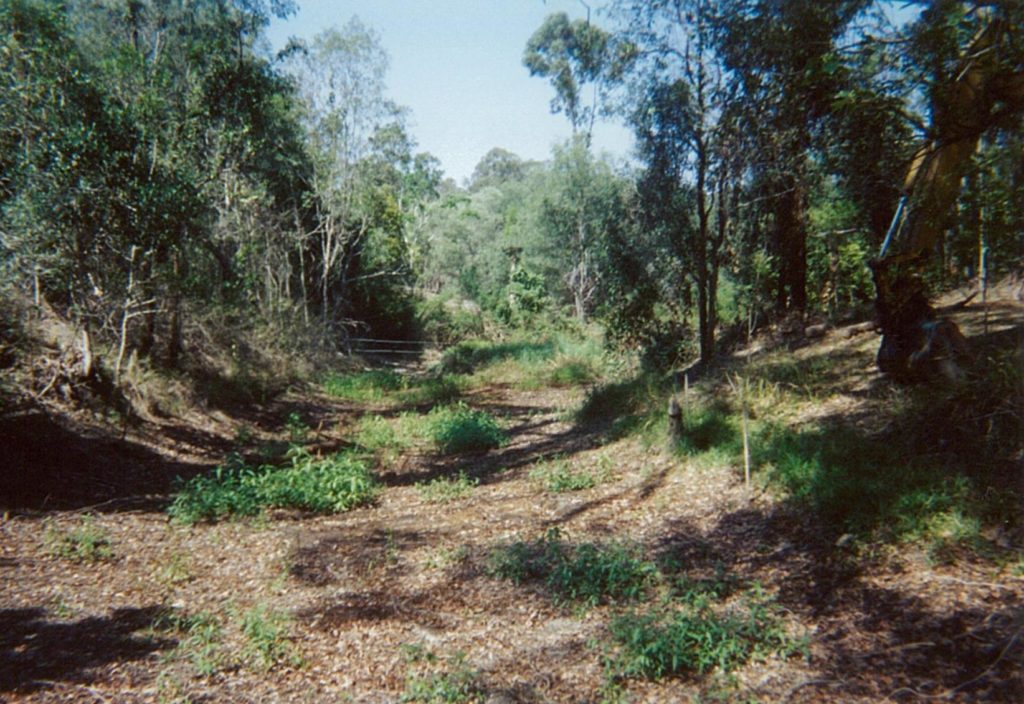
A silted up gully (Above) has been turned into a wildlife packed waterhole (below)
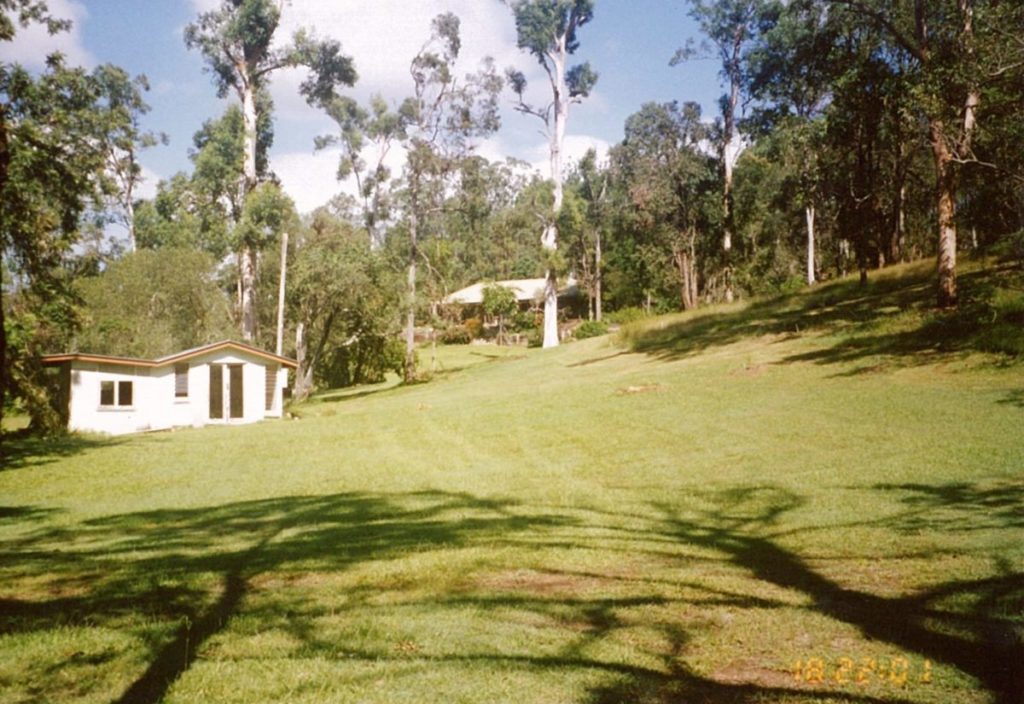
Former lawns (Above) now have native grasses, shrubs, trees and wildlife (below).
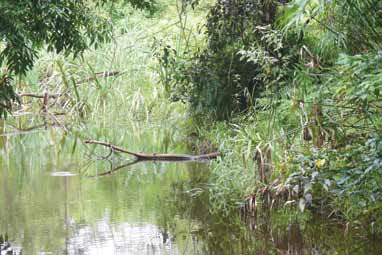
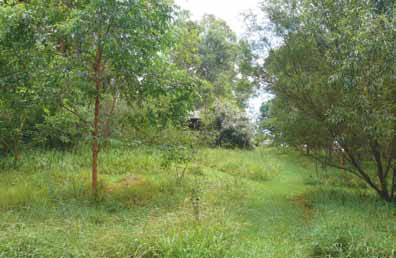
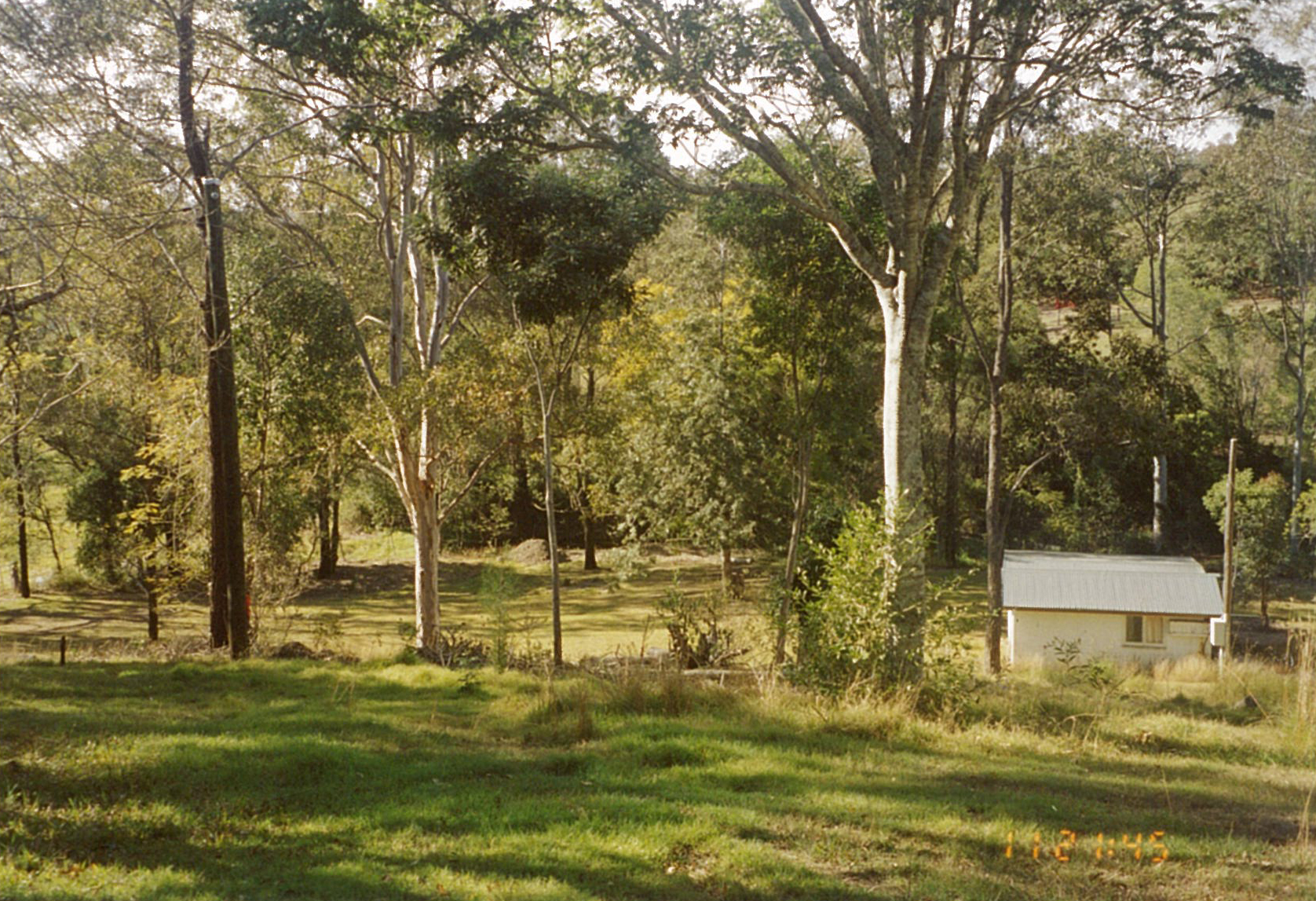
When we first arrived the nights were silent without any sign of life. The first year I disposed of 300 large Cane Toads. I collect and use 100 to 300 smaller Cane Toads that move in each year for fertiliser around the trees. The summer nights are now filled with the sound of crickets, frogs and owls.
“Our journey in restoring the land is similar to the many I have read about in [Land for Wildlife] articles, however each has its own uniqueness. Collectively [they] would be a good reference point for anyone starting out in converting a “park” into a home for wildlife”.— Peter French
Article by Peter French Land for Wildlife member Yugar, Moreton Bay
